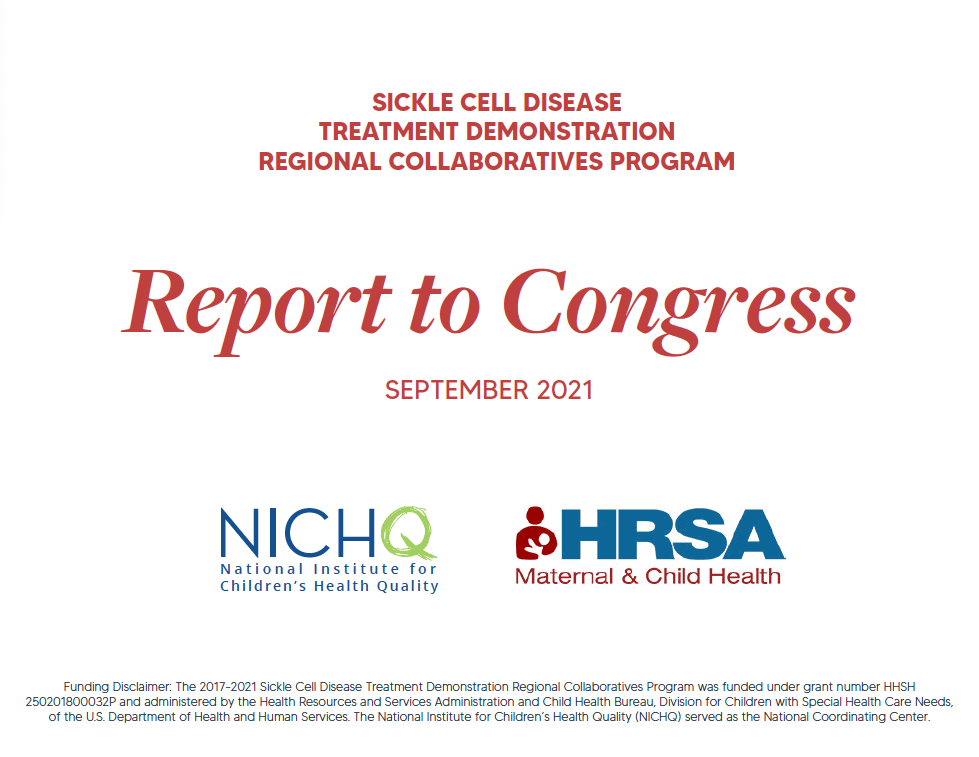Sickle Cell Disease Treatment Demonstration Regional Collaboratives Program Report to Congress
Sickle Cell Disease (SCD), an inherited blood disorder that is more prevalent in individuals of African and Latinx/Hispanic descent, affects approximately 100,000 Americans. People living with SCD experience acute pain crises, dangerous infections, and other serious health problems that can damage every organ in the body, requiring providers who are knowledgeable and understanding.
The Health Resources and Services Administration launched the Sickle Cell Disease Treatment Demonstration Program more than ten years ago. As we push to enhance access to services for people living with Sickle Cell Disease and improve and expand provider and patient education, NICHQ worked with five regional teams from across the country to deliver a comprehensive report to Congress detailing outcomes from the Sickle Cell Disease Treatment Demonstration Regional Collaboratives Program (SCDTDRCP).
The 2017-2021 SCDTDRCP addressed clinical and psychosocial needs to improve the health and quality of life of people with sickle cell disease. The Regional Coordinating Centers conducted numerous regional activities in Program priority areas. These activities, along with the Program recommendations, will inform and enhance future efforts to provide quality care for people living with this complex condition.
Serving as the 2017-2021 National Coordinating Center for the Sickle Cell Disease Treatment Demonstration Regional Collaboratives Program (SCDTDRCP), NICHQ was pleased to submit a Report to Congress, with details of the Program, including data, Regional Coordinating Centers’ activities, and recommendations for providers.
Details
